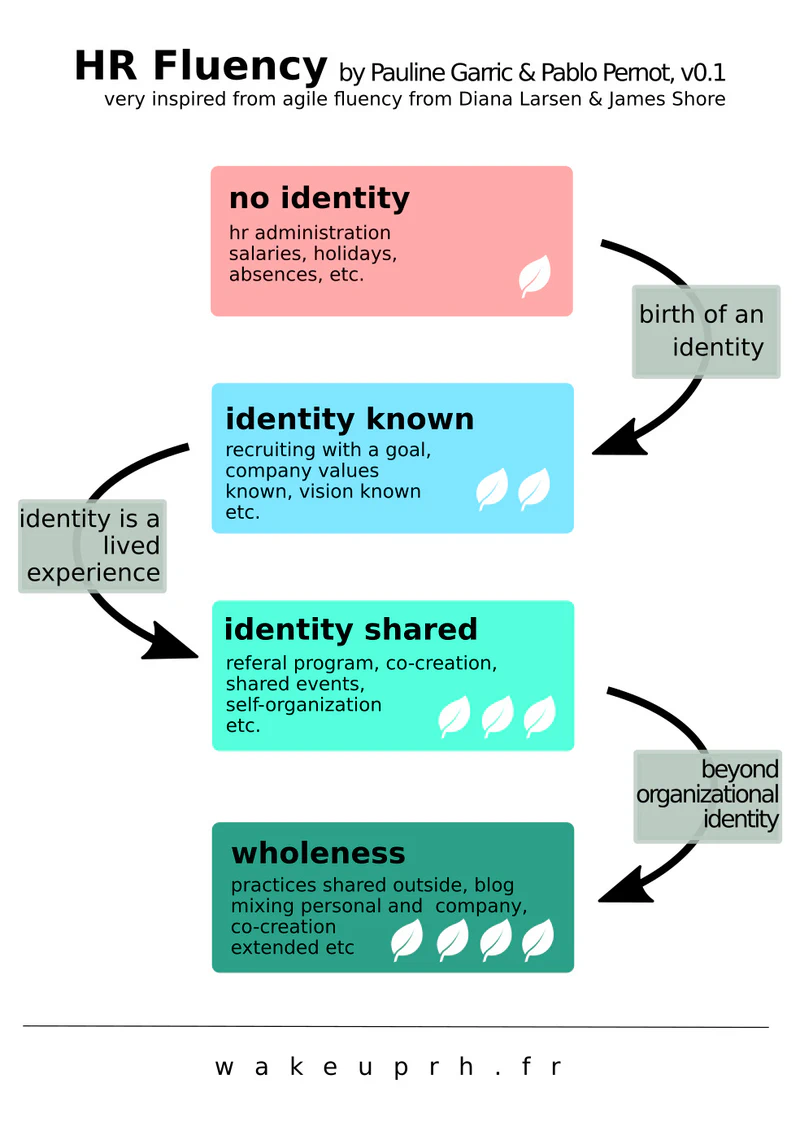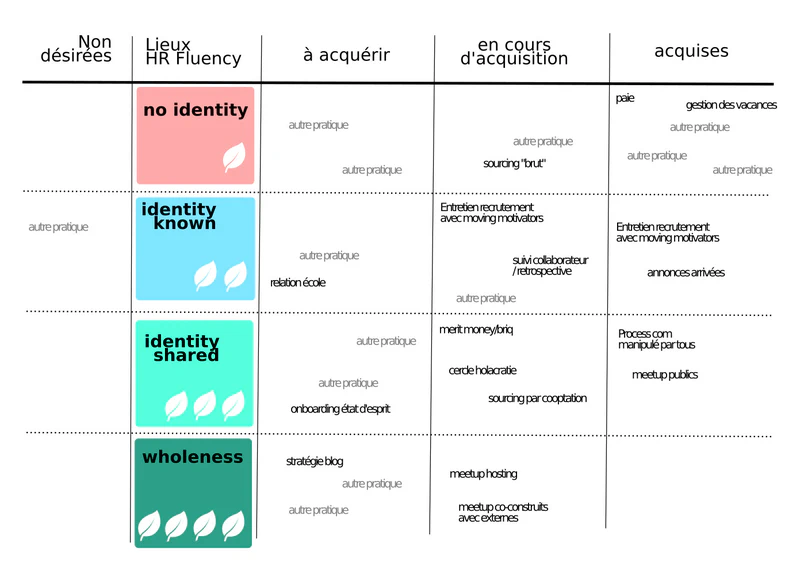I’ve already talked to you quite a bit about agile fluency, a model in the agile world that doesn’t dictate how to act but clarifies ideas. In my coaching, it helps me remind several essential points.
-
Benefits / investments. For every benefit, there’s generally an investment required. People generally seek benefits without wanting to invest or without letting go of something elsewhere. It’s good to remind that an investment is needed.
-
There are several “zones” in Agile Fluency, you need to go to the one that fits you (this requires clarifying our intention). It’s useless for a (large) bank – for example – to have the “timetomarket (market responsiveness)” flexibility of a startup, perhaps because its market is fairly captive. I say perhaps. If I refer to Agile Fluency, if you want to be good in your domain you can consider reaching for example the zone “deliver value when it has value” and organize your setup with near-shore or offshore since that’s/that was the trend. But if you want to be the best in your domain, you need to seek to reach the zone of “optimize value”. Then near-shore or offshore no longer really make sense because you’re seeking a dynamic around a multidisciplinary group that will allow you to optimize value". It’s useful to remind this too. You get the benefits related to your investment, so you must question your intention.
-
“Fluency” means speaking a language fluently. With ease aptly reminds Pauline. French I speak with ease, English less so, Spanish I need a dictionary in my pocket. But if I don’t speak English for several months I’ll lose my knowledge of the language. For our practices it’s the same, we must question whether we speak them with ease or not. We must remember that we can forget them, lose our facility. Very often certain people explain to me that they practice such and such approach. But do they do it with ease? Ease, what does that mean in daily life? It probably represents a qualitative and quantitative aspect (recurrence of use). This question of ease raises many good questions. It’s very useful in an “Agile Fluency” approach to classify the practices we want to reach this target zone. But are these practices acquired? in the process of being acquired? not desired? And what does “acquired” mean? Specifying all this, tracking it, is introducing rigor, discipline and clarity in reading our agile trajectory. It’s useful to remind this.
-
It’s important to bring people back to realities. In Diana Larsen and James Shore’s observations, few companies benefit from agile’s promises. The durations mentioned for a true agile trajectory are telling: from 6 months to 5 years, and then nothing stops. It’s useful to remind this.
Wake Up RH
Through Wake Up Rh, with Pauline, we recently decided to extend the “Agile Fluency” reading to HR aspects, notably through a use of this approach within beNext.
We propose a reading of an HR path that we’re calling for now “HR Fluency”, very much inspired therefore by Agile Fluency.
Identity
We focused our approach on the idea of identity. Very important for an HR perspective. It involves the idea of culture and experience.

The HR path we propose in our “HR Fluency” approach is as follows (unlike Agile Fluency these aren’t necessarily linked stages, we speak of those in HR Fluency more as levels of the same path):
- First stage, No known identity: HR activities are administrative, the group’s identity doesn’t matter, payroll, absence management, etc.
- Second stage, identity is known. We have a common identity and we seek to unite around it (recruitment, values, etc.). For example through our messages or our ways of recruiting, for example through monitoring our collaborators, etc.
- Third stage, identity is shared. This identity is lived and transmitted at all times in the organization (retention, fulfillment, etc.). For example, regular monitoring of collaborators, events co-created by group members, cooptation made possible, practicing what we preach (holacracy circles, etc.).
- Fourth stage, identity is global, it goes beyond the group’s framework. This identity is lived beyond the organization (no more boundaries, sharing, wholeness). For example: sharing practices externally, personal blog articles talking about the employer brand (of the organization), mixed internal/external events, etc.
Here again we propose a reading grid that allows us to question where we are and especially where we want to be. What are the practices that need to be implemented to speak this stage fluently (“fluency”, with ease). Which ones need to be acquired? Which ones are being acquired? Which ones are acquired and what measures allow us to say so (qualitative and frequency)?
Reading your practices in light of HR Fluency

Where does your organization want to go on an HR level? Here are the steps for using HR Fluency.
State of play
Let’s make a list of the HR department’s practices (and beyond, which are related to identity, to the organization’s experience). We observe the list of practices that come up, we observe where they’re judged to be (in progress, acquired, etc.).
Challenge of practice placement
It happens that people don’t necessarily place practices in the right zone. We harmonize our point of view and our vision of each practice: investment, meaning, benefits. Recruitment can be carried out in many different ways. Do they implement the organization’s identity? Do they make it live? Is recruitment a stage only linked to the HR department or to other groups? Is it known or lived? Etc.
Definition of in progress, and done
We acknowledge that co-constructed meetups are held. They energize the structure. They fulfill people. But is this practice positioned in “in progress” or in “acquired”. The difference is great. What does it mean to have ease in co-constructing meetups? Frequency? Multiplicity of internal speakers? Quality? We often note the absence of a real acquisition of many practices (the vast majority of practices are “in progress”), and thus not being able to really benefit from them.
Precise questions or with perspective: we want for example to reach the “wholeness” zone, how to extend our writings beyond the organization? Or our festive events?
A certain number of practices are also needed to benefit from investments: a single practice isn’t enough to reach a zone. Density is important. To take the parallel with a language: you need enough words to speak a language, to constitute communication. A certain density.
Take a step back
These practice tables with a “HR fluency” zone as target help clarify the what and why, but also the how, and the qualitative aspects of how. They allow you to have an intelligent and adapted measure of the state of your identity, your culture. We note the undesired practices and why. It’s also revealing of your identity and your desire as an organization.
Our next wake up rh breakfast will allow us to discuss all these practices with you.
Click on the tag below for other “agile fluency” articles